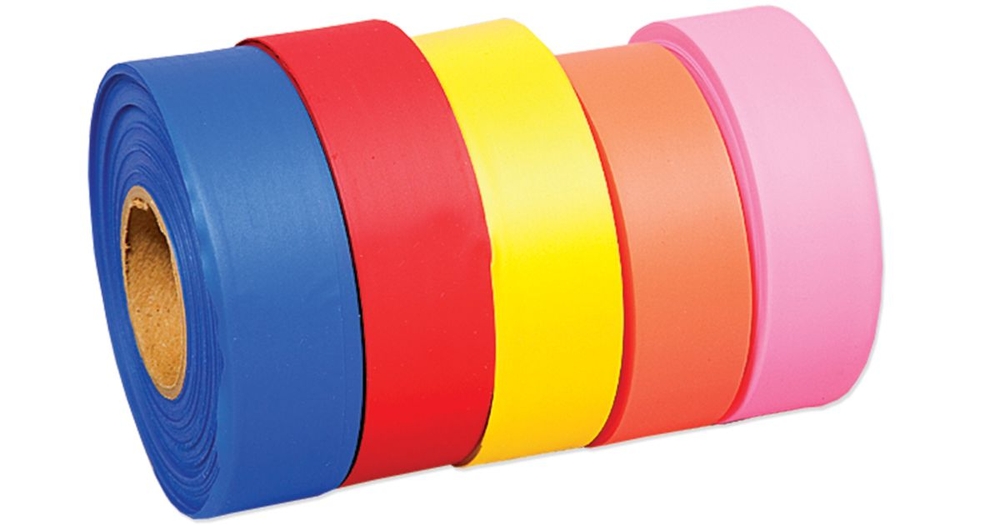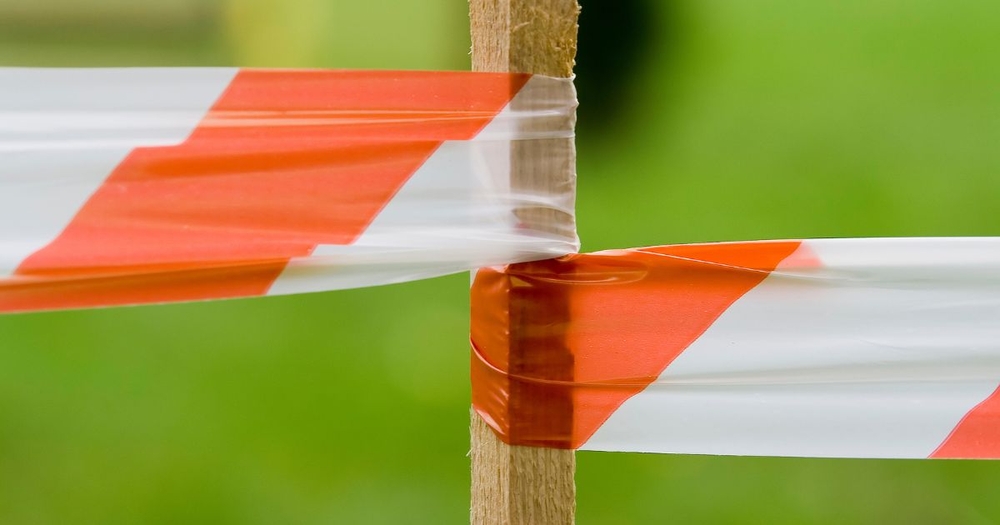
Flagging tape is a versatile and essential tool for many industries. Highly visible and resistant to the elements, flagging tape can be used for surveying, forestry, disaster relief, mining, and wildland fire suppression.
No matter the industry or purpose, flagging tape offers an efficient way of marking points of interest and relaying information quickly both on-site as well as from afar. By using different colors, it creates a “visual shorthand” that can save time, money, and even lives.
Flagging tape typically comes in a variety of colors, each one providing a different meaning to surveyors. Here is a guide to the commonly used colors and what they mean:
Marks elevation points.
Indicates the location of pipelines or underground utilities.
Indicates the location of electrical lines or water pipes.
Denotes the boundaries of a property, plot, or area.
Acts as a warning sign or cautionary marker for hazardous areas such as sinkholes or cliffs.
Usually used as an “X” marking to denote a boundary corner point.
In land surveying, flagging tape is commonly used for marking boundaries, elevation points, and other important surveying markers.
One common use of flagging tape in land surveying is to delineate survey boundaries. Surveyors use brightly colored flagging tape, which is tied to trees or stakes along the border of a property or plot. This makes it easier for people to see the exact location of the boundary lines, especially in heavily wooded areas where visibility can be low.
Flagging tape can also be used to mark the location of underground utilities, including electrical lines or water pipes. This is especially important before starting any construction work or excavations to avoid damaging any essential utility lines.
Flagging tape can also be used to mark specific elevation points or corners. Surveyors use colored flagging to indicate the top or bottom of a steep slope, the extent of a retaining wall or embankment, or the location of a reference point for future surveying work.
Once the surveying work is complete, flagging tape is easy to remove. All you have to do is untie the flagging tape and take it off the tree or stake, leaving behind no trace or damage to the environment.
Flagging tape is a versatile and important tool used in firefighting. It is often used to mark and identify hazards, trails, and boundaries during a firefighting operation.
Firefighters often use flagging tape to mark the location of hazards, such as collapsed buildings, downed power lines, or hazardous materials. The flagging tape's bright color and high visibility make it an effective way to quickly identify potential dangers in the area.
Flagging tape can also be used to mark fire lines or firebreaks, which is especially helpful when creating a fire line in thick vegetation or smoke, where visibility is low. Using flagging tape, firefighters can mark the path of the firebreak, ensuring that it's clear of debris and easy to follow.
Firefighters also use flagging tape when approaching the site of a wildfire to quickly locate it and safely trace their way back once they have extinguished the blaze. It can also be used to mark water sources or staging areas and to indicate evacuation routes or boundaries.
During search and rescue missions, flagging tape can be used to mark the area searched and to indicate areas where help may still be needed. This helps to reduce search time and ensures that the entire area is thoroughly searched.
In forestry applications, blue flagging tape is often used to mark trees according to various criteria, such as logging or potential hazard. Depending on the specific application, different colors of flagging tape can be used for different purposes.
For example, red may signify a tree that should be logged, and yellow may mean there's a hazard present in the area. By using flagging tape, forestry workers can easily identify which trees should be logged or avoided with just one glance.
Flagging tape is also an easy, lightweight way to mark trails or potential hazards in an area. It can be used for a variety of purposes, from marking unhealthy trees to pointing out dangerous areas such as cliffs or sinkholes.
Flagging tape comes in a wide range of colors and sizes, making it easy to differentiate between trails and hazards. It is also durable and resistant to weather conditions, so it can be used in almost any environment.
Emergency crews use red flagging tape during disasters to mark patients with life-threatening injuries in need of immediate attention. Yellow denotes persons with serious non-life-threatening conditions, while green conveys those with minor injuries that can wait for attention.
Flagging tape can also be used to mark potential safety zones that should not be entered, as well as proposed evacuation routes. It is an effective way to quickly let those in the area know where they go and where they should avoid, helping to reduce the chance of further injury or damage.

Flagging tape is typically made from brightly-colored vinyl or plastic material. The vinyl is usually woven for enhanced strength and abrasion resistance, while the plastic material may be glossy or matte in finish. Most flagging tapes come with a special adhesive backing to ensure secure adhesion to various surfaces.
Flagging tape boasts a range of features and benefits, making it an indispensable tool for various industries. Here are some of its key advantages:
Brightly colored vinyl or plastic material for enhanced visibility
Woven material for increased strength and abrasion resistance
Special adhesive backing for secure adhesion to various surfaces
Offers extra protection in extreme temperatures and environmental conditions
Durable enough for long-term outdoor use
Easy to install and remove without leaving any residue
Get more out of your flagging system with extra durable materials from Baseline Equipment. Our tape is specifically designed for tough environments like extreme temperatures and humidity.
High visibility means no mistakes when trying to organize worksites, communicate in the field, or locate a specific point.
With Baseline Equipment flagging tape, your team will be easily seen and heard in any situation. Get the right material for the job and trust Baseline to protect you and get the job done!